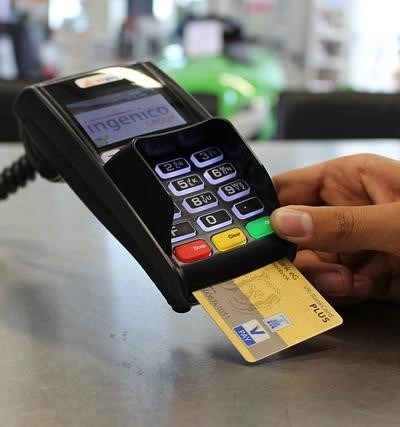
The proliferation of digital transactions necessitates a rigorous understanding of digital safety and the vulnerabilities inherent in online interactions. This article delves into the crucial aspects of securing sensitive data, focusing on the often-misunderstood concept of the CVV code (Card Verification Value) and its role in broader cybersecurity strategies.
Understanding the CVV Code and its Limitations
The CVV code, also known as the card verification value, is a three- or four-digit security code printed on the back of credit and debit cards. Its primary function is to verify that the cardholder possesses the physical card, adding an extra layer of security to online transactions. However, it is crucial to understand that the CVV, while a valuable tool, is not an impenetrable defense against fraud. It can be compromised through various methods, including phishing scams and malware infections.
The Threat Landscape: Data Breaches and Online Fraud
Data breaches are a significant threat to online privacy and payment security. Criminals target businesses and individuals to steal sensitive information, including credit card details, CVV codes, and personally identifiable information (PII). This stolen data is then used for online fraud, identity theft, and other malicious activities. The consequences can be severe, leading to financial losses, damaged credit scores, and legal repercussions.
Essential Measures for Secure Transactions
Effective fraud prevention requires a multi-layered approach. Beyond the CVV, robust security practices are essential. These include:
- Strong Password Security: Employing complex, unique passwords for all online accounts is paramount. Password managers can assist in this process.
- Two-Factor Authentication (2FA): Enabling 2FA adds an extra layer of security by requiring a second form of verification, such as a code sent to your phone, beyond your password.
- Phishing Scam Awareness: Be vigilant against phishing emails and text messages designed to trick you into revealing your sensitive data. Never click on suspicious links or provide personal information over unsecured channels.
- Malware and Ransomware Protection: Install and maintain up-to-date antivirus and anti-malware software on all your devices.
- Secure Websites: Ensure that you are only making transactions on secure websites, indicated by «https» in the URL and a padlock icon in your browser.
Beyond the CVV: Holistic Information Security
While the CVV plays a part in credit card security, a comprehensive approach to information security is vital. This includes practicing good digital safety habits, being aware of the latest cybersecurity threats, and regularly reviewing your financial statements for any unauthorized activity. Remember, protecting your information is an ongoing process that requires constant vigilance and proactive measures.
Ignoring these crucial aspects of digital security can lead to severe consequences. Proactive measures and a holistic approach to information security are paramount in today’s digital landscape.
Advanced Strategies for Enhanced Payment Security
While the preceding discussion outlined fundamental measures for mitigating risk, achieving truly robust payment security requires a more sophisticated understanding of the threat landscape and the implementation of advanced security protocols. The increasing sophistication of cyberattacks necessitates a proactive, multi-layered approach that extends beyond simply safeguarding the CVV code (card verification value).
Proactive Fraud Prevention: Beyond Reactive Measures
Reactive measures, such as investigating fraudulent transactions after they occur, are insufficient. A robust fraud prevention strategy must incorporate proactive measures, including real-time transaction monitoring systems that utilize machine learning algorithms to detect anomalous activity indicative of online fraud. These systems analyze vast datasets to identify patterns and deviations from established user behavior, enabling immediate intervention and the prevention of fraudulent transactions before they are completed. This proactive approach is crucial in minimizing financial losses associated with data breaches and identity theft.
Enhancing Credit Card Security through Tokenization and Encryption
Tokenization replaces sensitive credit card data with non-sensitive substitutes, or tokens, which can be used for transactions without revealing the actual card details. This significantly reduces the impact of data breaches, as even if a database is compromised, the stolen tokens are useless to cybercriminals. Furthermore, robust encryption protocols, such as Advanced Encryption Standard (AES), must be employed throughout the payment processing lifecycle to ensure that sensitive data remains confidential even if intercepted.
Addressing the Persistent Threat of Phishing Scams and Malware
Phishing scams remain a primary vector for obtaining sensitive information, including CVV codes and login credentials. Comprehensive employee training programs, coupled with sophisticated email filtering and anti-phishing technologies, are essential for mitigating this risk. Similarly, robust malware and ransomware protection, including regular software updates and the implementation of endpoint detection and response (EDR) systems, is crucial to prevent malicious code from compromising systems and stealing data. This includes protecting against sophisticated attacks that exploit zero-day vulnerabilities.
The Crucial Role of Information Security Management Systems
A comprehensive information security management system (ISMS), aligned with frameworks such as ISO 27001, provides a structured approach to managing and mitigating information security risks. This involves establishing clear policies, procedures, and controls across all aspects of an organization’s operations, including data storage, access control, incident response, and business continuity planning. Regular security audits and penetration testing are essential components of an effective ISMS, ensuring that security controls remain effective against evolving threats.
Securing sensitive data, particularly in the context of online transactions, requires a holistic and multi-faceted approach. While the CVV code plays a role in payment security, it is only one piece of a larger puzzle. By combining strong password security, two-factor authentication, proactive fraud prevention measures, robust encryption, and a comprehensive information security management system, organizations and individuals can significantly enhance their resilience against the ever-evolving threats of online fraud and data breaches. The pursuit of robust digital safety necessitates a continuous investment in cybersecurity expertise and the implementation of cutting-edge security technologies.


The author effectively articulates the critical role of the CVV code in online transaction security while simultaneously highlighting its inherent limitations. The discussion of the threat landscape, encompassing data breaches and online fraud, is well-structured and informative. The article successfully underscores the necessity of a multi-faceted approach to security, moving beyond reliance on a single element like the CVV code. The suggested security measures are practical and relevant to current online security challenges, making this a valuable contribution to the discourse on digital safety.
This article provides a concise yet comprehensive overview of CVV code security and its limitations within the broader context of digital transaction security. The emphasis on the vulnerabilities associated with CVV codes, despite their importance, is particularly valuable. The inclusion of practical recommendations for secure online transactions, such as strong password security and two-factor authentication, enhances the article’s practical application. The clear and accessible language makes this a useful resource for both individuals and professionals seeking to improve their understanding of online security.